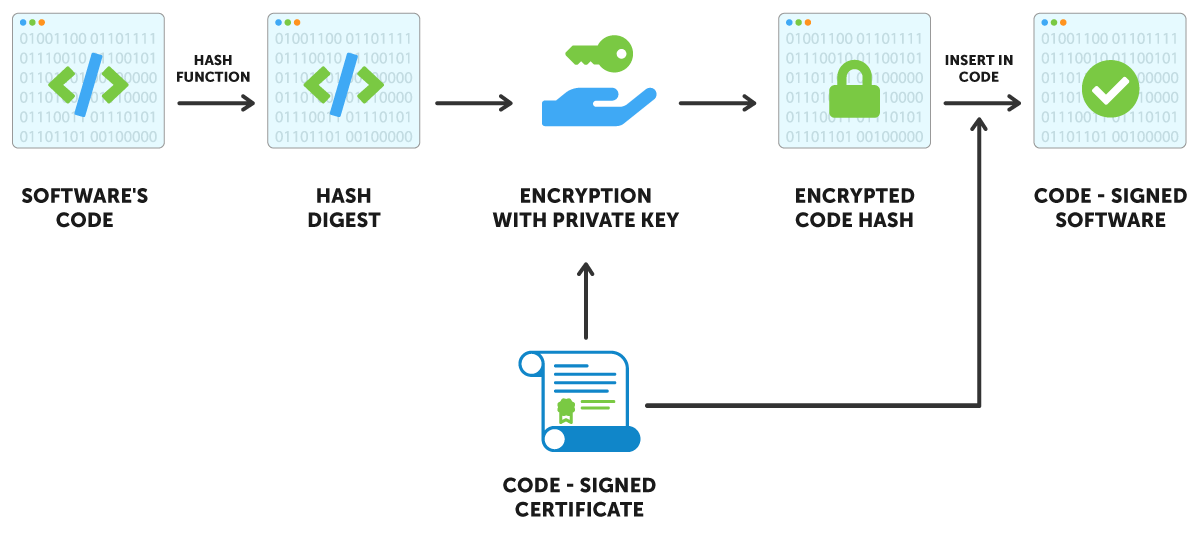Introduction
In the digital world, ensuring the authenticity and integrity of software is crucial. Code signing is a security mechanism used by developers and organizations to certify that their software has not been tampered with and originates from a trusted source. This article explores the concept, benefits, and implementation of code signing.
What is Code Signing?
Code signing is the process of digitally signing software, scripts, and executables to verify their authenticity and integrity. This is achieved through cryptographic techniques where a digital signature is added to the software using a private key. When a user downloads or installs the software, the system checks the signature using the corresponding public key to confirm its legitimacy.
How Does Code Signing Work?
-
Generating a Key Pair – A developer or organization generates a public-private key pair using a Certificate Authority (CA) or other tools.
-
Creating a Hash – A cryptographic hash of the software or code is created to represent its unique fingerprint.
-
Signing the Hash – The hash is encrypted using the private key, forming a digital signature.
-
Attaching the Signature – The signature is embedded into the software along with the public key and certificate details.
-
Verification – When users download or install the software, their system verifies the signature using the public key to ensure the software’s integrity and origin.
Benefits of Code Signing
-
Enhanced Security: Protects users from malware, tampered software, and unauthorized modifications.
-
User Trust: Builds confidence in software by verifying the developer’s identity.
-
Compliance: Many platforms, including Windows, macOS, and mobile app stores, require code signing for distribution.
-
Prevention of Unauthorized Changes: Ensures that code remains unchanged after being signed.
Code Signing Certificates
To sign code, developers need a code signing certificate issued by a trusted CA. These certificates are of different types:
-
Standard Code Signing Certificate: Verifies the identity of the developer or organization.
-
Extended Validation (EV) Code Signing Certificate: Provides higher security and trust, often required by large enterprises.
-
Self-Signed Certificate: Used for internal testing but not trusted publicly.
Best Practices for Code Signing
-
Use Strong Encryption: Always use modern cryptographic algorithms to prevent signature forgery.
-
Keep Private Keys Secure: Store private keys in Hardware Security Modules (HSMs) to avoid theft or misuse.
-
Revoke and Renew Certificates Regularly: Update certificates periodically to maintain security.
-
Timestamp Signed Code: Adding a timestamp ensures that even after certificate expiration, the signature remains valid.
Conclusion
Code signing is an essential security measure that helps developers and organizations protect their software while ensuring user trust. By following best practices and using code signing certificates, businesses can enhance software security, prevent tampering, and meet compliance requirements. In today’s cybersecurity landscape, code signing is a fundamental step in secure software distribution.

Comments on “Understanding Code Signing: Securing Software and Establishing Trust”